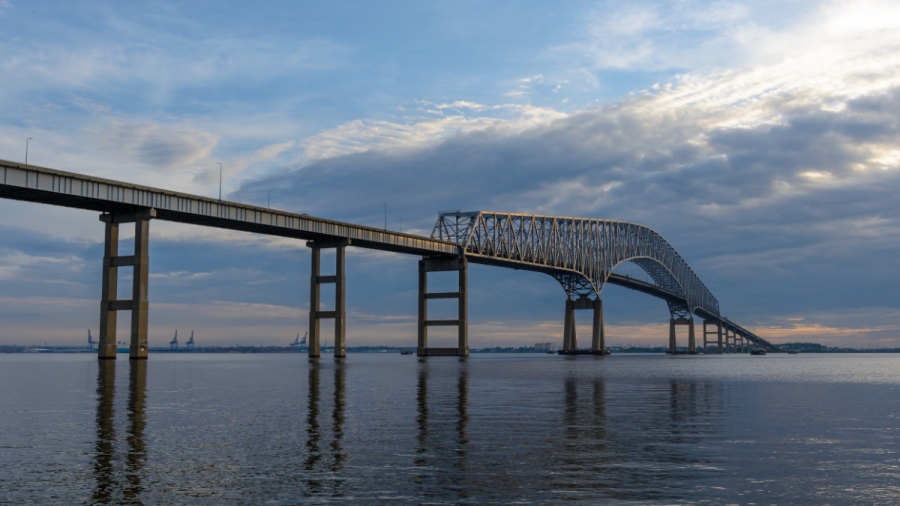Commercial shipping traffic through the Port of Baltimore is set to return to normal levels, following the channel’s full reopening earlier this week after the collapse of the Francis Scott Key Bridge.
“They are back open for business, ready to bring in the largest containerships that call there,” announced U.S. Coast Guard Rear Admiral Shannon Gilreath during a virtual press briefing on June 11.
The deadly bridge collapse in March had prompted many shipping companies to reroute their cargo to other ports. The disaster halted most maritime traffic through Baltimore’s busy port as crews worked around the clock to clear an estimated 50,000 tons of fallen steel and concrete from the Patapsco River. This massive cleanup effort, involving federal, state, and local agencies, cost roughly $100 million.
Officials anticipate that companies that avoided Baltimore during the cleanup will return now that the channel has been restored to its original depth and width. The city’s port processes more cars and farm equipment than any other in the country.
“All that rerouted commercial traffic belongs in Baltimore today,” said U.S. Transportation Secretary Pete Buttigieg. “We have every indication that that is what is taking place, but we will be reinforcing that expectation as we speak with players up and down the supply chains.”
Crews managed to reopen portions of the deep-draft channel in phases, allowing some commercial traffic to resume in recent weeks. Already, some cruise ships and large containerships have passed through.
However, the economic ripple effects of the collapse have impacted thousands of longshoremen, truckers, and small business owners, extending well beyond the Baltimore region.
Officials estimate that the salvage operations will cost up to $75 million, with the Coast Guard response already costing $24 million. Rebuilding the bridge is projected to cost nearly $2 billion, with hopes for completion by 2028.
The Biden administration approved $60 million in immediate federal aid, described by Buttigieg as “a down payment on the work ahead.” All of this aid has been committed, according to White House Deputy Chief of Staff Natalie Quillian.
President Joe Biden has pledged that the federal government will cover the full cost of rebuilding the bridge, though this funding is still awaiting Congressional approval.
In a statement on June 11, Biden praised the efforts of everyone involved in the recovery. “Baltimore can count on us to stick with them every step of the way, and we will continue to have your back until the bridge is rebuilt,” he said.
The bridge collapse occurred when the cargo ship Dali crashed into a critical support column of the Francis Scott Key Bridge in the early hours of March 26, sending six members of a roadwork crew plunging to their deaths. The ship had lost power shortly after leaving Baltimore for Sri Lanka. A National Transportation Safety Board investigation revealed that the Dali experienced power outages before starting its voyage, though the exact causes of the electrical issues remain undetermined. The FBI is also conducting a criminal investigation into the circumstances leading up to the collapse.
The Dali remained stuck amid the wreckage for almost two months, with a massive steel truss draped across its damaged bow. On May 20, the ship was refloated and guided back to port, allowing officials to open a channel that was 50 feet deep and 400 feet wide — sufficient for most large commercial vessels.
With the full federal shipping channel, which is 700 feet wide, now reopened, officials confirmed that two-way traffic can resume. They also noted that additional safety requirements have been lifted due to the increased width.



